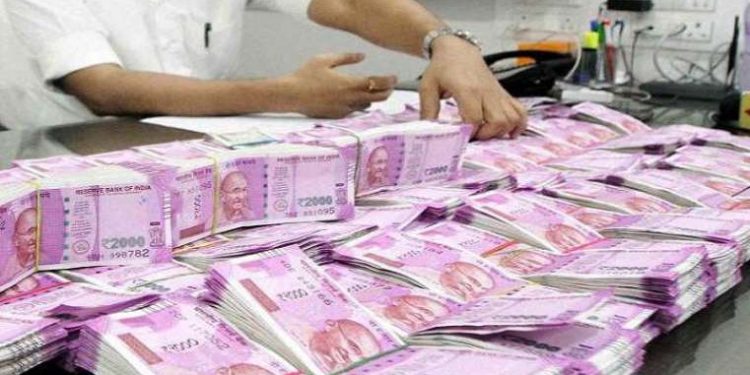New Delhi: A record windfall from Reserve Bank of India (RBI) under Governor Shaktikanta Das to the tune of Rs 1.76 lakh crore – higher than the aggregate dividend paid out by the central bank in previous three years – will certainly give the Narendra Modi government ammunition to fight an ever-widening slowdown in economy by spurring investment and giving sectoral stimulus.
Given the expected revenue shortfall in a slowing economy especially against the aggressive targets set by Finance Minister Nirmala Sitharaman’s maiden Budget presented last month, the windfall from the RBI may be used to trim borrowing, help fund the Rs 3.3 lakh crore capex plan, capitalise banks and provide fiscal stimulus to some stressed sectors like automobile, experts and economists said.
While the Finance Ministry seeking higher payouts from the RBI was said to be one of the reasons that led to Urjit Patel’s abrupt quitting as RBI governor in December last year, Das-led RBI board has transferred sums that is said to be far more than the stimulus pumped by some G20 nations into their economies during the decade-old global financial crisis.
This comes at a time when the economic growth rate has slumped to a five-year low after accelerating in the first few years of Modi 1.0 regime. Consumer spending has slowed, private investment hit a bump, the auto sector is facing the worst crisis in two decades leading to tens of thousands of job losses, real estate sector has seen piling of unsold inventories and fast-moving consumer goods (FMCG) companies have seen a decline in volume growth.
While the Finance Ministry has so far not detailed the blueprint of using the surplus from the RBI, experts said the transfer especially the excess reserve of over Rs 50,000 crore could be utilised for capital formation by investing in infrastructure building or enhancing the lending capacity of banks by recapitalising them.
“If the government chooses to convert the transferred sum into higher spending, we believe it would tilt more in favour of infrastructure spending rather than consumption,” Emkay, a brokerage firm, said in a research report. “Overall, this should support markets in short-term due to additional support from the RBI to the government,” it added.
According to the BofA Merrill Lynch Global Research report, the RBI amount will likely be used to recapitalise PSU banks by Rs 70,000 crore, as announced Friday by Nirmala Sitharaman. “This, in turn, should help reduce lending rates. Excessive fiscalisation would cut down RBI OMO,” the company said.
Echoing similar views, Ashvin Parekh Advisory Services managing partner, Ashvin Parekh said unprecedented transfer from RBI in the given economic scenario would help the government in stimulating the economy.
The money could be used for immediate recapitalisation of banks so that they get enough headroom for expanding credit. Increase in credit will have a multiplier effect on the economy as it touches many sectors, Parekh pointed out.
The RBI board Monday accepted the recommendations of the Bimal Jalan committee and decided to transfer Rs 1,76,051 crore to the government. The amount consists of Rs 1,23,414 crore as surplus or dividend for 2018-19 and another Rs 52,637 crore from its surplus capital.
Out of this total sum, Rs 28,000 crore has already been paid as an interim dividend and has been accounted for by the budget in the previous financial year.
The net liquidity injection from the RBI as a result of this exercise will amount to Rs 1,48,051 crore against Rs 90,000 crore estimation provided in Sitharaman’s budget for 2019-20.
In 2017-18, Rs 40,659 crore was transferred in dividend to the government. During the year (2016-17) of demonetisation, the RBI had transferred Rs 30,659 crore, less than half of the Rs 65,876 crore it had paid in 2015-16.
Bank of Baroda chief economist Sameer Narang said the RBI transfer will help the government meet its 2019-20 capex target of Rs 3.38 lakh crore.
Consequently, given the inclination of the government towards fiscal consolidation, the additional funds are likely to be utilised to cover the possible shortfall in receipts, and meet the fiscal deficit target of 3.3 per cent of the GDP for the current fiscal, ‘JM Financial Institutional Securities’ said in a report.
“Nevertheless, a mild stimulus to revive the slowing economy cannot be ruled out. The shortfall in receipts in the latter scenario is likely to be sorted out through off-budget accounting of the food subsidy, similar to the last three years,” the company said in a statement.
It should, however, be stated here that earlier this month, former RBI governor D Subbarao warned that raiding the reserves of the central bank only illustrates the ‘desperation’ of a government.
PTI







































